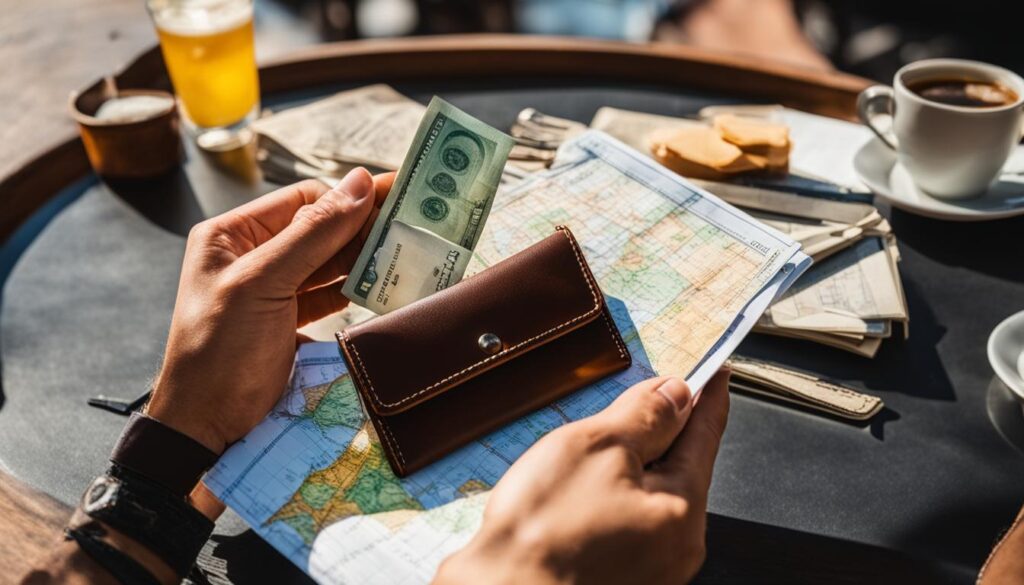Have you ever wanted to take a solo trip but didn’t know where to start? Planning a solo trip can be a daunting task, but with the right guidance, it can be a fantastic experience that allows you to connect with yourself and the world around you. In this comprehensive guide to solo travel planning, you’ll learn how to plan a thrilling and successful solo adventure.
No matter what kind of solo travel experience you’re after, this guide has got you covered. From choosing the perfect destination to creating a budget and packing list, we’ll provide you with all the essential tips and tricks to make your solo trip planning a breeze. So, are you ready to explore the world? Let’s begin!
Choosing the Perfect Destination
Before embarking on a solo trip, it’s crucial to choose the right destination for you. There are countless solo travel destinations around the world that offer unique cultural experiences and adventures. To help you narrow down your options, we’ve compiled a list of popular destinations that cater to solo travelers.
| Destination | Safety Level | Affordability | Cultural Experiences |
|---|---|---|---|
| Thailand | Safe | Affordable | Temples, street food markets, beaches |
| New Zealand | Very Safe | Moderate | Hiking, adventure sports, Maori culture |
| Spain | Moderately Safe | Moderate | Architecture, food, nightlife |
| Japan | Safe | Expensive | Temples, gardens, technology |
Remember, safety should always be a top priority when selecting your destination. Do your research, check travel advisories and make sure the area is safe for solo travel. Additionally, consider the costs associated with traveling to your selected destination, including flights, accommodations, and daily expenses. Lastly, think about the cultural experiences you’re looking to have, such as historical landmarks, outdoor adventures or culinary experiences.
Creating Your Itinerary
A well-planned solo trip itinerary is crucial for a successful solo trip. You want to make the most of your time and ensure you experience everything you’ve always dreamed of. Here are some tips to help you create the perfect itinerary:
- Start with a must-see list: Make a list of all the places and activities you absolutely must experience during your solo trip. This will help you prioritize your time and ensure you don’t miss out on anything.
- Research your destination: Take the time to research your destination thoroughly. Look for local events, cultural experiences, and hidden gems that may not be on the typical tourist itinerary.
- Create a flexible schedule: Remember to give yourself some room for spontaneity and relaxation. Don’t pack your schedule too tightly, or you may end up feeling overwhelmed.
- Balance your activities: Try to balance your itinerary with a mix of physical activities, cultural experiences, and downtime. This will help prevent burnout and allow you to fully enjoy your trip.
Remember, your solo trip itinerary should be personalized to your interests and preferences. Don’t be afraid to tailor it to suit your needs. By doing so, you’ll ensure you have the trip of a lifetime.
Budgeting for Solo Travel
One of the most significant factors in planning a solo trip is budgeting. Without adequate financial planning, your trip can quickly become a financial burden. However, with some smart budgeting strategies, you can explore new destinations, make unforgettable memories, and save money.
Here are some valuable tips for solo trip budgeting:
Estimate Your Costs
The first step in budgeting for your solo trip is estimating your costs. You’ll need to take into account various expenses such as the cost of transportation, accommodation, food, activities, and emergency funds. Researching reliable sources, such as travel blogs, can provide you with a good idea of what to expect in terms of costs and prices in your chosen destination.
Find Cost-effective Accommodations
Accommodation usually takes up the most significant part of your travel budget. To save money, you may want to consider alternatives to traditional hotels—such as hostels, guesthouses, Airbnb options, or camping. Check out different price ranges and read reviews on trusted travel websites to ensure that you find a comfortable and safe place to stay within your budget.
Save Money on Transportation
Another way to maximize your budget is by finding cost-effective transportation options. When planning your trip, research various modes of transportation such as buses, trains, bikes, and ride-sharing services. Depending on your budget and the location of your destination, you may be able to save money with a rail pass or by renting a bike rather than renting a car.
Still Enjoy Memorable Experiences
You don’t have to sacrifice fun experiences to stick to your budget. Instead, look for free or low-cost activities and attractions. Check local listings, outdoor activities, museums, or galleries for free or low-cost exhibitions. Local markets can often provide good food options and allow you to taste authentic local cuisine while staying within your budget.
By following these tips for solo trip budgeting, you can make the most of your adventure, all while staying within your budget. Remember to plan ahead, research your options, and find ways to cut costs while still enjoying all the experiences that your chosen destination has to offer.
Ensuring Your Safety
Traveling alone can be an incredible adventure, but it’s important to take necessary safety precautions. Follow these solo travel safety tips to minimize risks and ensure a safe journey.
Research Safe Travel Destinations
Before embarking on your solo trip, research safe travel destinations. Look for places that have low crime rates and a welcoming attitude towards tourists. Check travel advisories and read reviews from other travelers to gather insights.
Stay Alert
While traveling alone, it’s essential to stay alert and aware of your surroundings. Be mindful of pickpockets and scams, even in seemingly safe places. Always trust your instincts and avoid high-risk situations.
Protect Your Belongings
Keep your belongings safe by using a secure bag or backpack. Avoid carrying valuables like passports, credit cards, or expensive electronic devices unless necessary. Use a hotel safe or carry a money belt to keep important items secure.
Connect with Local Resources
When traveling alone, it’s essential to connect with local resources for support. Research emergency services and take note of important phone numbers. Connect with other travelers or join a local tour group to increase your safety and make new friends.
Packing Essentials for Solo Travel
When traveling solo, packing effectively is essential to ensure that you have everything you need without lugging around unnecessary items. Below is a comprehensive packing list of essential items for different types of solo travel adventures:
Backpacking Trip
| Clothing | Toiletries | Electronics |
|---|---|---|
| Hiking boots or sturdy athletic shoes | Sunscreen | Headlamp or flashlight |
| Quick-dry pants or shorts | Insect repellent | Waterproof phone case |
| Moisture-wicking tops | First-aid kit | Portable charger |
| Fleece jacket or down coat | Microfiber towel | Camera or GoPro |
City Trip
- Comfortable walking shoes
- Change of clothes for dinner or special events
- Collapsible water bottle
- Universal power adapter
- Compact umbrella or rain jacket
- Mini backpack or crossbody purse for sightseeing
- Guidebook or city map
Beach Trip
- Bathing suit and cover-up
- Sandals or flip flops
- Sun hat and sunglasses
- Beach bag or tote
- Waterproof phone pouch or case
- Beach towel or blanket
- Reusable water bottle
Make sure to also pack any necessary travel documents, such as your passport or visa, and keep them in a secure, organized place. With this comprehensive packing list, you’ll be well-prepared for your solo travel adventure.
Accommodation Options for Solo Travelers
When traveling solo, choosing the right accommodation is crucial for a comfortable and enjoyable trip. Here are some popular solo travel accommodation options to consider:
| Accommodation Type | Pros | Cons |
|---|---|---|
| Hotels | Clean, comfortable, and convenient. Many provide amenities such as room service, fitness centers, and free breakfast. | Can be expensive, especially in central locations. May not provide as social an experience as other options. |
| Hostels | Affordable, social, and often located in central areas. Ideal for meeting other travelers and making friends. | May not provide much privacy, and may not be as comfortable as other options. Noise levels can be high. |
| Vacation Rentals | Can offer more space, privacy, and amenities than hotels or hostels. Ideal for longer stays or groups. | May not provide as central a location as other options. Can be more expensive than other options. |
| Alternative Options | Couchsurfing or house-sitting can be free or low-cost options that provide a unique and immersive travel experience. A chance to meet locals and learn about their culture. | May not offer as much privacy, safety concerns about staying with strangers, and are less predictable than other options. |
Ultimately, the type of accommodation you choose depends on your personal preferences, budget, and travel style. Make sure to read reviews and do research to ensure that the accommodation you choose fits your needs.
Embracing the Solo Travel Experience
Traveling alone can seem daunting, but it offers a unique opportunity for personal growth and self-discovery. To make the most of your solo adventure, consider these solo travel tips:
- Don’t be afraid to meet new people. One of the best things about solo travel is the chance to make new friends and connect with locals. Strike up a conversation with fellow travelers or seek out social events in your destination. You never know who you might meet!
- Step out of your comfort zone. Trying new things is a fundamental aspect of solo travel. Challenge yourself to try something you’ve never done before, whether it’s trying a local dish, learning a new skill, or bungee jumping.
- Embrace spontaneity. While it’s essential to plan ahead, don’t be afraid to deviate from your itinerary if an exciting opportunity arises. Some of the best travel memories come from unexpected experiences.
- Take time for yourself. Solo travel is the perfect opportunity for self-reflection and personal growth. Take the time to disconnect from technology, reflect on your journey, and embrace moments of solitude.
Remember, solo travel is all about embracing new experiences and stepping out of your comfort zone. Be open to new adventures, and you’re sure to have a transformative journey.
Conclusion
In conclusion, planning your solo trip may seem daunting, but with the right preparation and mindset, it can be an incredibly fulfilling experience. Remember to select the perfect destination that aligns with your interests and budget, create a flexible itinerary, prioritize your safety, and pack efficiently.
Embrace the freedom and opportunities that come with solo travel. Try new things, meet new people, and step out of your comfort zone. You may discover a new passion or gain a fresh perspective on life.
We hope that this guide has given you valuable insights and inspiration for planning your solo trip. Don’t wait any longer; start planning your adventure today!

















































